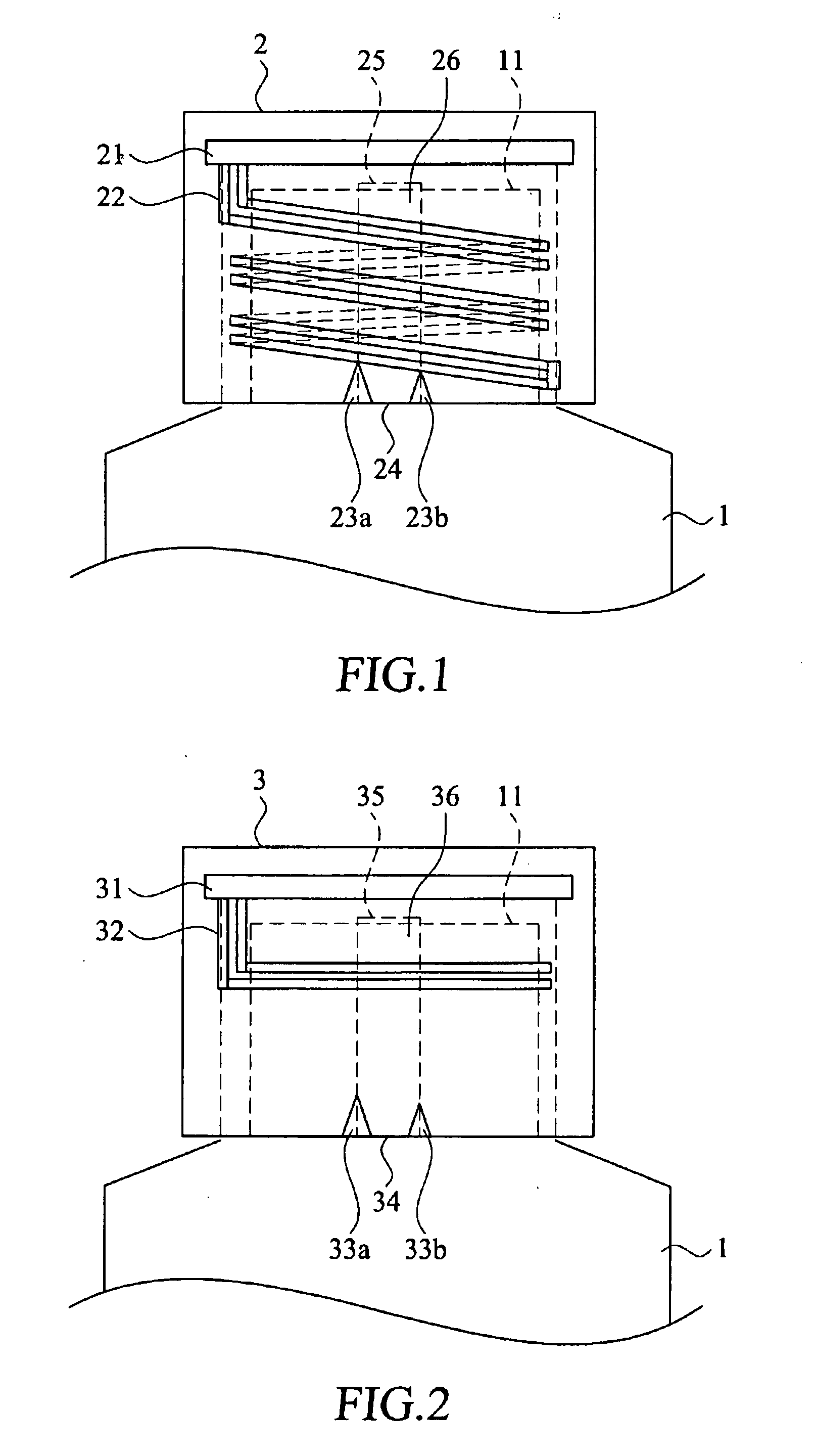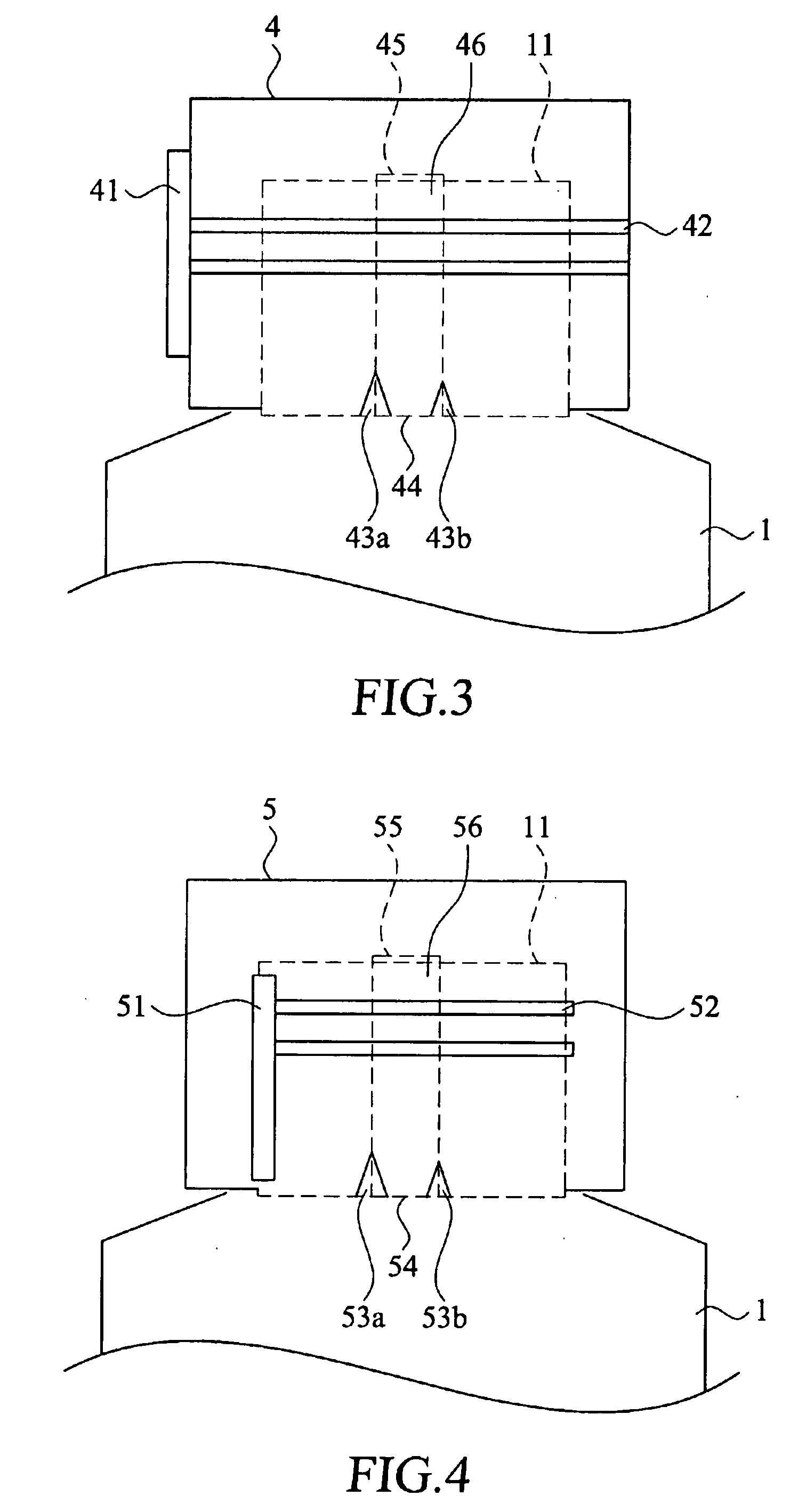Sealing detection mechanism using RFID tag for container
- Summary
- Abstract
- Description
- Claims
- Application Information
AI Technical Summary
Benefits of technology
Problems solved by technology
Method used
Image
Examples
first embodiment
[0031]With reference to the drawings and in particular to FIG. 1, FIG. 1 is a schematic side view showing a closure incorporated with a sealing detection mechanism using RFID tag constructed in accordance with the present invention. A container 1 is used for the accommodation of substances that may be in liquid form or solid form and has a top open end 11 to be closed by a closure 2. The container 1 may be made of any rigid materials like glasses, plastics, or metal. The closure 2 is provided with a fastening structure and may be fastened by any conventional way to the container 1 or removed from the container 1. The closure 2 may be made of any materials that enable the tight sealing of the closure 2 to the container 1.
[0032]The closure 2 is incorporated with a sealing detection mechanism of the present invention. The sealing detection mechanism comprises a RFID tag 21 arranged at a predetermined position at the closure 2 and a plurality of conductive units 22 extending from the RF...
second embodiment
[0041]Please refer to FIG. 2. FIG. 2 is a schematic side view showing a closure incorporated with a sealing detection mechanism using RFID tag constructed in accordance with the present invention. In this embodiment, a container 1 with a top open end 11 may be closed by a closure 3. The closure 3 is incorporated with a sealing detection mechanism of the present invention. The sealing detection mechanism comprises a RFID tag 31 arranged at a predetermined position at the closure 3 and a plurality of conductive units 32 extending from the RFID tag 31.
[0042]The conductive units 32 have a L-shaped structure. The conductive units 32 extend downward from the RFID tag 31 with a vertical section and then bend perpendicularly to a horizontal section. Similar to the first embodiment, the closure 3 is provided with two inverted V-shaped notches 33a, 33b and a tear line 35 with thinner wall thickness. The longitudinal part surrounded by the tear line 35 forms an easy tear strip 36 and extends a...
fifth embodiment
[0046]FIG. 5 is a schematic side view showing a closure incorporated with a sealing detection mechanism using RFID tag constructed in accordance with the present invention. A closure 6 has an upper section 61, a middle section 62 and a lower section 63. The upper section 61 has a top end (not labeled). The middle section 62 is perforated with a plurality of open areas 64. The upper section 61 is connected with the lower section 63 through the middle section 62. The lower section 63 is securely fixed to the container 1. Preferably, the lower section 63 is made of heat shrinkable material.
PUM
 Login to View More
Login to View More Abstract
Description
Claims
Application Information
 Login to View More
Login to View More - R&D
- Intellectual Property
- Life Sciences
- Materials
- Tech Scout
- Unparalleled Data Quality
- Higher Quality Content
- 60% Fewer Hallucinations
Browse by: Latest US Patents, China's latest patents, Technical Efficacy Thesaurus, Application Domain, Technology Topic, Popular Technical Reports.
© 2025 PatSnap. All rights reserved.Legal|Privacy policy|Modern Slavery Act Transparency Statement|Sitemap|About US| Contact US: help@patsnap.com



